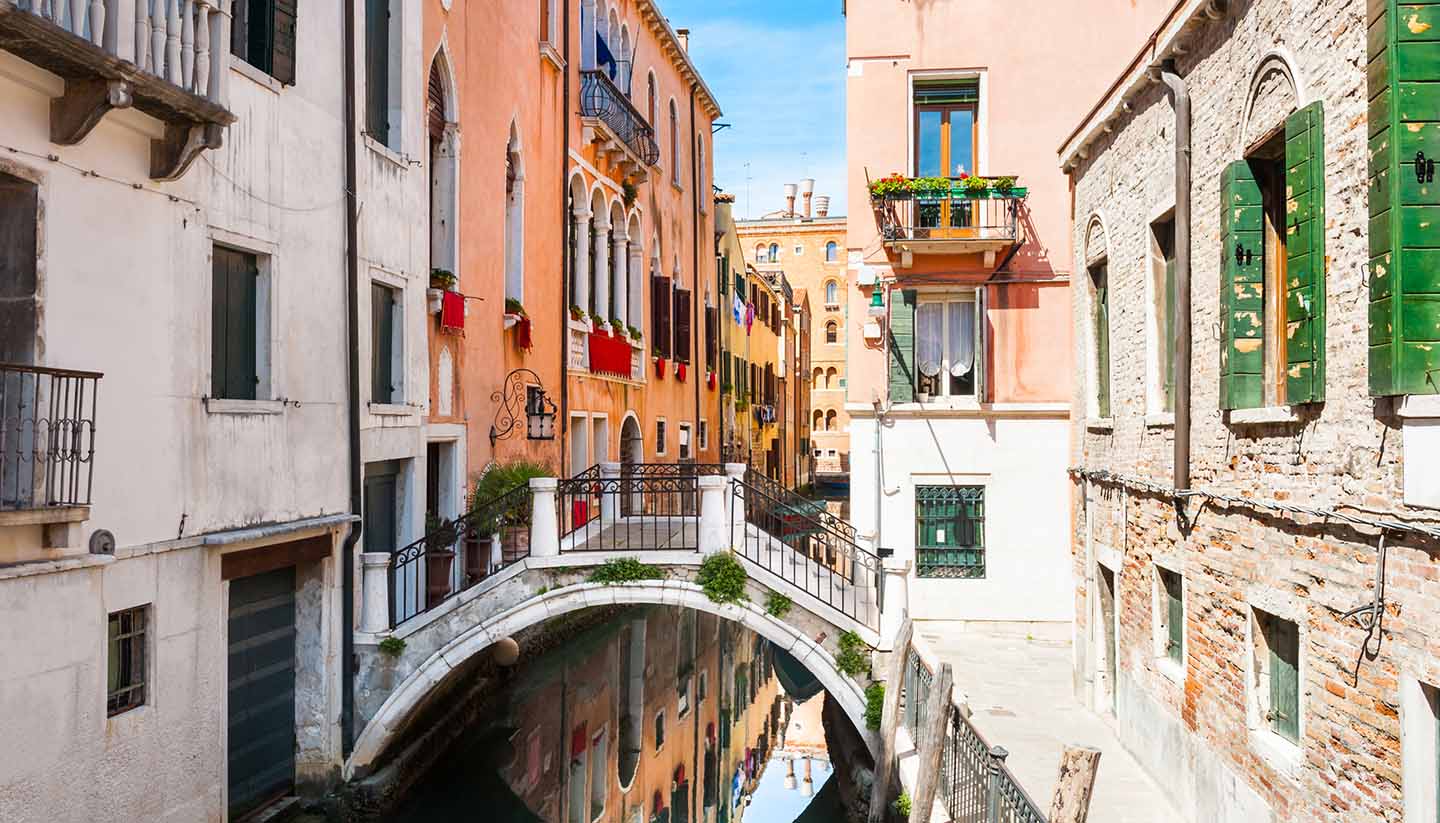Venice History
Venice began life as a refuge encampment as Roman refugees fled invaders during the decline and fall of the Empire in the 5th century. More marshland than lagoon, it was hardly the most obvious of locations, but the settlers created small colonies dotted around the coastline, which soon thrived.
Over time, the colonies grew and began to intertwine, until they eventually formed one larger city that was historically connected to Byzantium via Ravenna. The city rebelled and elected the first doge in 726, whose successors would lead Venice for the next 1,000 years. It grew immensely as a trading centre and seafaring power, and was commissioned to build a fleet for the ill-fated Fourth Crusade, which ended in the looting and occupation of Christian Constantinople in 1204.
By the 15th century, Venice had become the most prosperous city in Europe, with more than 3,000 ships using its ports. At this time, the grandest palaces were built and great artists were nurtured. The cosmopolitan city boasted German, Jewish, Armenia, Turkish and Greek inhabitants living on the Grand Canal, some of whom had been persecuted elsewhere.
But the city that depended so much on the sea would soon fall victim to it. First, the rise of the Ottomans threatened the Adriatic trading routes, while the discovery of the New World in 1492, and Vasco de Gama’s trip around Africa’s Cape of Good Hope in 1498, undermined Venice’s hegemony over the seas.
Venice stayed on top with its art, style and legendary Carnevale. It was the place to be for Europe’s rich and famous in the 16th and 17th centuries. This changed by the time of the Napoleonic Wars and when Veneto passed into the hands of the Austrians through the Treaty of Vienna in 1815, many Venetians were poor. Revolt came in 1848, and unification with Italy in 1866.
A century later, after surviving both World Wars, including a notable resistance movement to Fascism in WWII, a disastrous flood wrecked many of Venice’s priceless buildings. Restoration has been ongoing ever since, while millions of tourists now visit the sinking city each year.
Did you know?
• Venice’s name is thought to come from the ancient Veneti people, who lived in the region in the 10th century BC.
• The city’s houses are built on long wooden stilts, or piles, driven into the lagoon bed, which have rotted very little.
• A new system of hollow, floatable barriers has been built as part of the MOSE project (Modulo Sperimentale Elettromeccanico) to help Venice resist rising tides.


